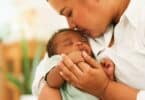The UK’s fertility watchdog, the Human Fertilisation and Embryology Authority (HFEA), is to consider reducing the number of embryos that can be implanted in women having IVF treatment in order to bring down the rate of multiple births.
This makes doctors and fertility experts happy because multiple births present more health risks for mothers and their babies.
Multiple pregnancies carry a significantly higher risk that babies will be premature and have more health and developmental problems. Premature babies also have a higher risk of dying. Also mothers with multiple pregnancies tend to suffer higher blood pressure and more frequent miscarriages compared with single baby pregnancies.
Approximately one in every four full term pregnancies after fertility treatment results in a multiple birth. This compares to one in 80 natural full term pregnancies.
At the moment the UK rules allow women under 40 to have two embryos implanted in one IVF cycle and women over 40 to have three.
The problem at the moment is that while the IVF specialist knows that the chances of a viable embryo developing for the woman under 40 is one in two, he or she will not be able to tell which of the two is most likely to survive, so they have to implant both of them.
In the longer run, the more cycles that a couple are prepared to undergo, the greater the chance that single-embryo implantation will eventually lead to a viable single embryo pregnancy.
However, the question is, how long will it take, how many cycles, and how much will it cost? Many couples spend thousands of pounds and suffer huge stress and anxiety every time they go through an IVF cycle.
Research is increasingly showing that implanting one embryo is just as likely to result in a viable pregnancy as multiple embryos.
Related Articles:
New Test Reduces Risk Of Multiple Births







The concern of multiple birth mums is that these moves have more to do with saving money than lives and that families will be more likely to be deprived of the chance of successful IVF.